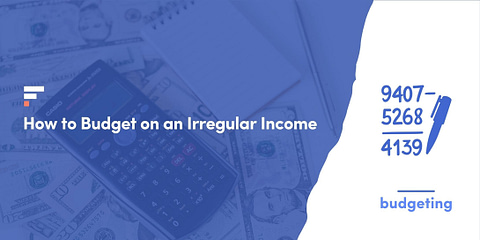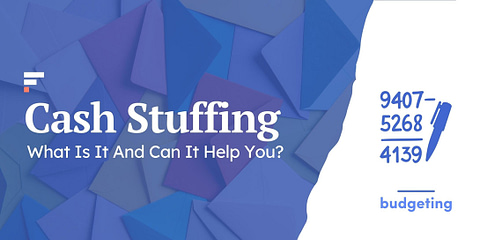Have you ever walked out of a supermarket after spending well above your budget and wondered how stores trick you into spending more?
Despite the inroads made by online shopping and delivery services, most consumers still go to physical supermarkets and department stores. However, they could be making themselves more susceptible to suggestion and influence at the point of purchase.
Physical retailers have ways of getting shoppers to buy more than they need at the cost of personal finance best practices. And their tactics are more subtle than pop-ups, commercials, and ads.
Here’s how stores trick you into spending more than you planned and some helpful ways to save.
1. The 99-Cent Solution

A famous way for stores to trick you into spending more is the 99-cent solution. This trick has been around since retail markets were invented. You’ll see sale items and pantry staples priced for a certain dollar amount plus 99 cents — soup for $2.99, frozen pizzas for $8.99, socks for $11.99, etc.
Retailers know that since shoppers primarily pay attention to the first number in the price (the “2” in “$2.99”), they may not pick up on the fact that the item is actually $3.
The solution is simple: get in the habit of mentally rounding up prices.
This even goes for products priced in the mid-dollar range. The more you think you’re spending, the more cautious you’ll be.
2. Suggestive Product Placement
Supermarkets tend to place their most profitable goods near the entrance. Fresh-baked bread, flowers, attractive produce, and grab-and-go snacks are often positioned to be the first things shoppers see when they come in and the last things they see before they check out.
These products appeal to many shoppers. Some can’t resist the allure of brightly colored cookies and pastries, while others may enjoy the instant gratification a bag of chips and a soda can offer.
Managers employ various strategies to trick you into spending more, such as positioning their most profitable items at eye level in the aisles. Wherever you go, they’ll try to get you to buy something without much thought or effort.
To guard against this, make a shopping list beforehand and stick to it as much as possible. Impulse buys may still happen, but having a plan in place will help you avoid most unnecessary purchases.
💸 Learn more: Getting a grip on your finances starts with understanding how to budget; this beginner’s guide can pave the way.
3. Big Sale Signs
Thrifty shoppers are always looking for a bargain, and retailers know this. They understand that even the illusion of a good deal will appeal to these customers. As such, they tend to play up price discounts, clearance sales, and other promotions.
This doesn’t mean the discounts aren’t real, just that stores go out of their way to promote them with large signs and bold-type prices, drawing your attention to heavily advertised items you may not need.
Remember that sales are usually seasonal. Back-to-school items are priced lower around August, chocolates and flowers are marked down close to Valentine’s Day, and Christmas specials can begin as early as October. Be aware of those pushes before they happen. Question the value of the products you look at.
👉 For Example
Some stores may offer “five for $5” specials on boxes of big-brand candy. Ask yourself if you’d buy each box individually if it were priced at $1. If not, you shouldn’t be interested in five for $5.
4. “Free” Samples
Free samples are one of the biggest draws of massive membership stores like Costco. Whenever you see a platter of freshly prepared food items or a tray of ice-cold beverage samples, you’re guaranteed to see a swarm of hungry shoppers.
The objective, of course, is to get you to buy the item on the spot. As direct and guileless an approach as it may seem, it’s just another example of how stores trick you into spending more.
Some shoppers might feel a slight sense of obligation to the workers who give them samples. After all, if they’re taking the time to feed you and talk to you, the least you can do is buy what they’re selling.
Don’t take the bait. And if you do, remember that you’re not obligated to do anything more than thank them.
5. Colossal Carts
Shopping carts were introduced in the 1930s. After World War II, retailers started making them bigger. By the mid-1970s, they had become so big that consumer advocates began noticing.
These days, with the rise of discount membership outlets, shopping carts are three times bigger than they were in 1975.
The logic behind this strategy is plain if you take the time to think about it — the more space you have to fill, the more you’ll find to fill it.
Many supermarkets now offer miniature shopping carts. If you’re just making a run for a few items, it’s a good idea to grab one of these smaller carts.
Another option is to bring your own reusable grocery bag. That way, the size and weight of the items you put in it might limit you from buying what you don’t need.
6. Miles of Aisles

Shoppers who don’t arrive at the store with a clear idea of what they need tend to find themselves wandering aimlessly down each aisle. As you might imagine, this can easily become a waste of time and money, especially if you’re at a superstore with dozens of aisles.
Overcoming the urge to meander is mainly a matter of self-discipline and planning. You’re less likely to drift if you have a concrete objective for your trip.
Resist the urge to venture down every aisle. This is how stores trick you into spending more than you planned. Stick to your shopping list and try not to deviate from it. A little curiosity is okay, but giving in to every impulse is a good way to spend much more than you intended to.
7. You Need It Now
The modern retail experience is defined by time: buy now, act fast, don’t delay. Retailers understand this all too well, which is why they promote limited-time offers.
Sales that only run for a limited time promote urgency: if you don’t pull the trigger immediately, you won’t get the bargain price. FOMO is a very real thing, and many retailers take advantage of this uniquely human trait.
In reality, limited-time discounts is how stores trick you into spending more than you intended. They’re typically seasonal and rarely reflective of shoppers’ actual needs. All they do is prey on your anxiety over missing out on a good deal to convince you to buy things you have no use for.
If you don’t actually need something that’s on sale for a limited time only, don’t give it a second thought.
8. Anchors Away
One retail tactic that showcases how stores trick you into spending is price anchoring, which is when stores advertise high market values on questionable items to make sales that don’t actually save the customer money.
👉 For Example
Four-piece lawn chair set may have a “suggested price” of $200. During a sale, the store might offer it at a deep discount of $100. This creates the illusion that you’re getting a great deal, but if the chairs are all made of cheap plastic, was it really worth $200 in the first place?
Shoppers are often so busy thinking about other things that they don’t take the time to analyze market values. Consequently, they accept whatever price the store gives them. In truth, “suggested” retail prices can be exaggerated beyond reason.
The solution is knowing the average going prices of various items before you ever set foot in the store. However, this requires a little research. Online shopping communities, social media groups, and message boards can be a good place to start.
9. The Sound of Music
You might not even notice it, but background music is one method in the arsenal of how stores trick you into spending more.
As recently as 40 years ago, calming music was thought to promote relaxation in shoppers. This supposedly made them likely to spend more time at the supermarket, naturally leading to more purchases.
Muzak went out of fashion decades ago, but music still plays a big part in sales strategy. Background music is still designed to make shoppers want to linger around, and it’s targeted for maximum effect.
👉 For Example
Department stores whose primary consumer demographic is Gen X shoppers might attempt to keep them around longer by playing ‘80s hits. Similarly, a fashion boutique might play upbeat pop hits or electronic music to make customers feel good while they peruse the racks.
10. The Old Switcheroo
Have you ever noticed how often your local grocery store’s layout changes? Sometimes, there’s an obvious reason for the shuffle, like if the store has recently undergone a complete remodeling. Other times, though, it’s simply a sneaky for a store to trick you into spending more.
Most shoppers take comfort in knowing where everything at their neighborhood stores can be found, especially if they’ve been going there for years. When that’s suddenly no longer the case, it creates tension.
A new store layout can make habitual shoppers nervous that they won’t be able to find their go-to pasta sauce, laundry detergent, or medications. As a result, they might go down other aisles to check for other essentials. They’re likely to do so until they familiarize themselves with the new layout.
As you well know, more time in the store equals more opportunities for sales.
The store probably hasn’t gotten rid of the product you want, only moved it. This is another way stores trick you into spending more. They know that the extra time you need to find the item will create more opportunities for impulse buys. Keep that in mind as you search frantically for your favorite potato chips.
Tricks Used by Online Storefronts
But what about online retailers? After all, many modern shoppers prefer to make purchases on the Internet rather than visiting a traditional store. Unfortunately, online retailers can be just as crafty as brick-and-mortar stores, and they have some sly ways of tricking you into spending more.
Some common tactics include:
- Putting extra items in your basket as part of a “combo” deal.
- Charging unexpected fees at checkout for shipping and handling.
- “Confirm-shaming” customers with loaded opt-out statements (“No, I don’t want to improve my health”).
- Hiding advertisements inside what looks like genuine content.
- Claiming that there is “only one piece left” of an item you searched for.
Of course, the most widespread online shopping manipulation technique is bombarding you with ads based on your searches or even on things you said while your phone was on!
Unfortunately, these online tricks can have drastic effects on your wallet.
Forewarned Is Forearmed
There’s nothing inherently unscrupulous about any of the strategies mentioned here (aside, perhaps, from price anchoring). These subtle psychological lures have been around for as long as shops have.
As long as brick-and-mortar stores exist, managers will return to these strategies to generate more revenue and keep you spending more than you should. Knowing how stores trick you into spending and what those methods look like is the key to avoiding being made a sucker.























